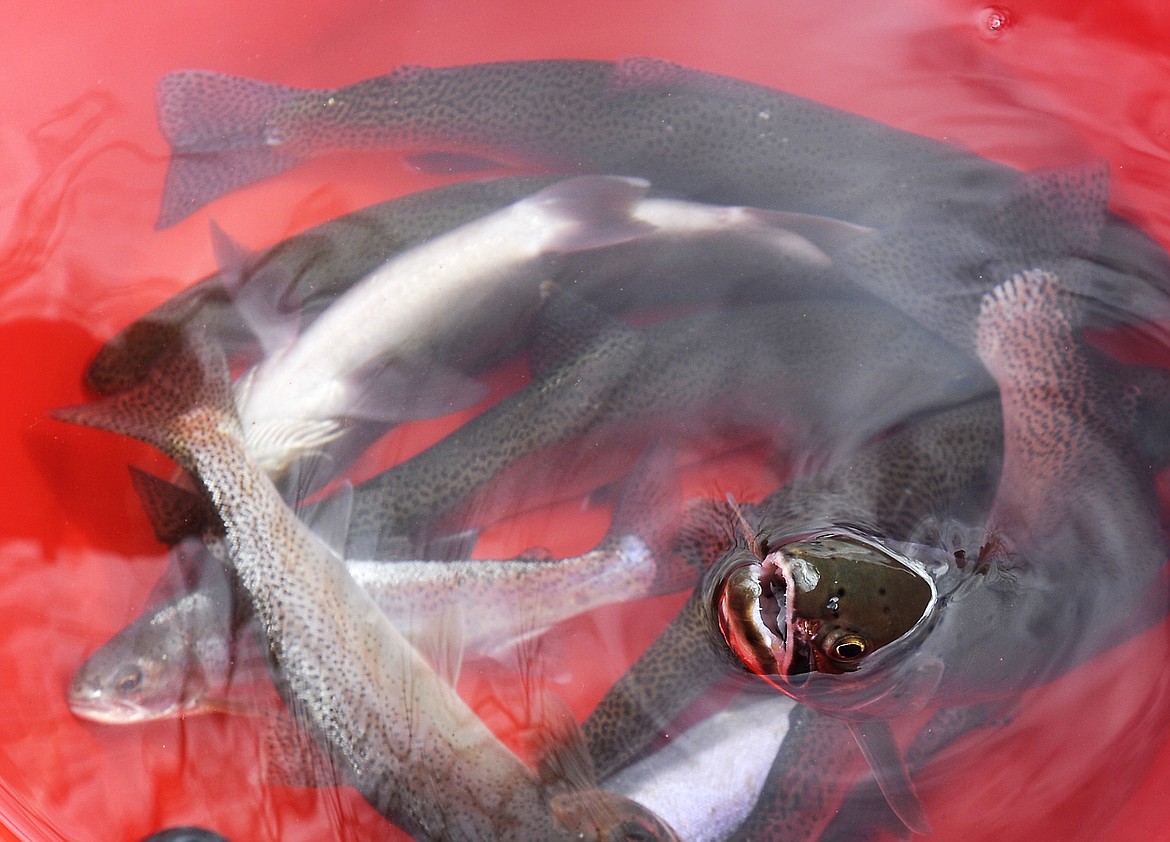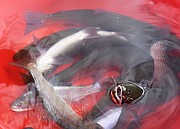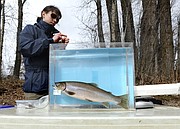Research looks at state's cutthroat trout
Cutthroat trout, a prized and legally protected fish species in Montana, are increasingly threatened by a growing trend of hybridization with non-native rainbow trout, according to research published last month in the scientific journal Global Change Biology.
A group of researchers from the University of Montana, the U.S. Geological Survey, Montana Fish, Wildlife and Parks and the University of Alaska analyzed Montana’s historical fish-stocking records and 35 years’ worth of genetic data collected by state biologists, finding that hybridization between the two species is increasing across remaining geographic range for genetically pure cutthroats.
For decades, fisheries managers in Montana and elsewhere in the Western U.S. stocked rivers and lakes with non-native rainbow trout, a popular sport fish that easily established breeding populations in the state’s waterways. The state abandoned the practice in 1969, but interbreeding between rainbows and the closely related cutthroats has resulted in a proliferation of hybrids and has eroded the native fish’s genetic pool throughout most of its range.
The distinction may seem trivial to some, but Clint Muhlfeld, a University of Montana Biological Station research scientist and one of the lead authors of the study, said Montana stands to benefit from increased efforts to conserve its official state fish.
“It represents our natural heritage, and it’s iconic because it has survived thousands of years in extreme environmental conditions and still persists on the landscape, as it did in the days of Lewis and Clark,” he said. “People come from all over the world to fish Montana’s wild waters, and in particular to catch native cutthroat trout. They not only have enormous ecological value, they have enormous socioeconomic and cultural value as well.”
Of importance to efforts to conserve native cutthroats, he added, is the group’s finding that colder waters do little to prevent the appearance of rainbow-trout genes in DNA samples from cutthroats.
“There’s been a recent notion that cold water will prevent hybridization from occurring. Clearly that isn’t the case with our data, where we have quantitative genetic data across space and time,” he said. “This false sense of security that cold waters will protect or provide refuge for cutthroats is clearly not the case.”
SINCE AT least the last ice age 14,000 years ago, cutthroat trout have evolved to survive the Northern Rockies’ dramatic shifts in climate and weather, from extreme drought to cataclysmic floods and landscape-altering wildfires. Previous studies have found that diluting that gene pool with non-native DNA reduces that resiliency.
Muhlfeld and his colleagues used genetic information captured from 12,878 individual fish caught at 582 locations in the Columbia, Missouri and South Saskatchewan river basins from 1980 to 2015. The University of Montana Conservation Genetics Laboratory, which Muhlfeld said has long been a pioneer in the fields of genetics and genomics, processed all the samples, meaning the researchers could get all their genetic information from one place.
The researchers compared the influences of historical stocking patterns, road density and climactic conditions including water temperature, precipitation, stream flows and road density. But Muhlfeld said what set their research apart from previous studies was the ability to measure those factors against the degree of hybridization over time.
The findings support existing evidence that the effects of climate change in the region — higher average stream temperatures and lower stream flows in the late spring and summer — could be exacerbating the trend. The single largest influence on hybridization, however, was the proximity of a cutthroat population to historically heavy rainbow-stocking locations.
“Genomic extinction may be inevitable for many non-isolated cutthroat trout populations if hybrid source populations are not eliminated,” the authors state.
THE FINDINGS place increased urgency on the task confronting fisheries biologists in Western Montana, where cutthroats have already been the focus of high-profile conservation projects.
In the South Fork Flathead River drainage, Montana Fish, Wildlife and Parks biologists have over the past decade spent about $3.5 million in federal funding to eradicate hybrid populations from 21 headwater lakes and re-stock them with genetically pure westslope cutthroat trout.
The project, considered the largest-ever in the history of cutthroat conservation, is slated to wrap up next year, following re-introductions in Handkerchief Lake and Sunburst Lake.
“The fact that all those sources in the headwaters were bleeding out fish and corrupting those genomes downstream in the South Fork makes it even more important,” Muhlfeld said. “Montana’s biologists were already ahead of the curve. They’ve always been conservation-minded and recreation-minded, and they’re doing what is needed to protect that native diversity.”
While his group’s research may jettison the hope that those high-elevation, “cold-water refugia” will ensure the persistence of genetically pure cutthroats into the foreseeable future, the study also found a strong link between human development and hybridization.
Continuing to reduce populations of rainbows and genetically compromised cutthroats is an important part of that strategy, he said, along with restoring clean, cold and interconnected stream habitat ideally suited for native trout.
“We can focus on these human stressors that are contributing most to the decline of cutthroat trout in this area,” Muhlfeld said. “There are things that we can do right now to increase resiliency and adaptation in a human world.”
Reporter Sam Wilson can be reached at 758-4407 or by email at swilson@dailyinterlake.com.






